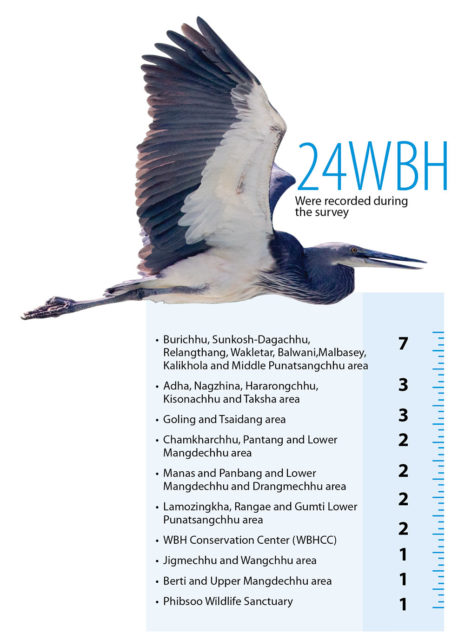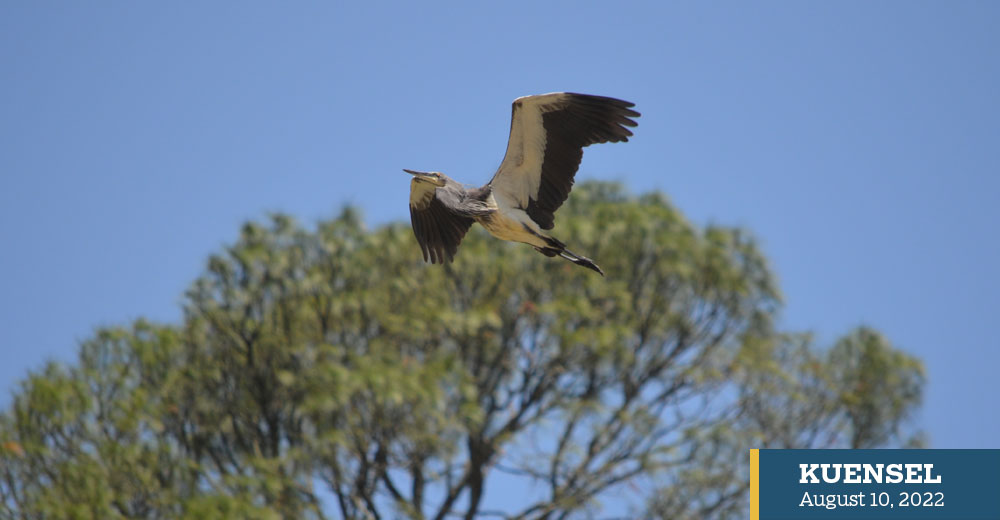Chhimi Dema
The country recorded 23 white-bellied herons (Ardea insignis) this year in nine prioritised habitat zones from 15 priority zones surveyed in March.
The population increased by one bird this year compared to 22 white-bellied herons (WBH) recorded last year.
WBH is a rare and critically endangered species of bird found in Southeast Asian countries—Bhutan, Northeast India, and Myanmar.
Globally, the bird population is less than 60.
According to the Royal Society for Protection of Nature (RSPN)’s Annual WBH Report 2022, from the 24 WBH recorded, 22 individuals were observed in the wild including one dead carcass and two individuals in the WBH conservation centre.
The survey covered more than 600 km of four river basins in the country.
The highest number of WBH, which is seven herons, were found in priority zone III covering areas such as Burichuu, Sunkosh-Dagachhu, Relangthang, Wakleytar, Balwani, Malbasey, Kalikhola, and Middle of Punatsangchhu.
“The analysis of population trends within zones indicates that the population is disappearing from Zone I that extends from Phochhu and Mochhu to Kamichhu near Punakha and Wangduephodrang,” stated the report.

Data from 2003 until today indicates the declining trend of the WBH population in Zone I (Phochhu to Kamichhu) and II (Kamichhu, Ada, Harachhu to Taksha). The last herons sighted in the zone was in 2018.
It was also noted that no herons were sighted in Zone I for the past two consecutive years.
Similarly, no sightings were recorded in Kurigongri basin.
“WBH birds, which are completely associated with the riverine ecosystem are at high risk of extinction due to habitat loss and degradation,” the report stated.
The WHB population is also constrained by the impact of climate change, natural calamities, diminishing food resources and limited knowledge of the bird’s ecology and biology.
Negligence, lack of awareness and knowledge is also driving the species to the edge, the report stated.
The report gathered that more than 438 sites along the river basins show that the birds faces threats from human activities such as fishing, natural resource extraction, infrastructure development, habitat degradation, timber and firewood collection, and hydropower development.
The survey was conducted by 95 surveyors from the Department of Forests and Park Services, members of local conservation support groups, and staff of RSPN.
The survey observed 2,599 birds belonging to 66 families and 244 species, and 712 mammals in the WBH habitats.
RSPN launched last year a five-year nature-based project aiming to stabilise or increase the bird population while also strengthening the livelihoods of the communities along its habitats.


